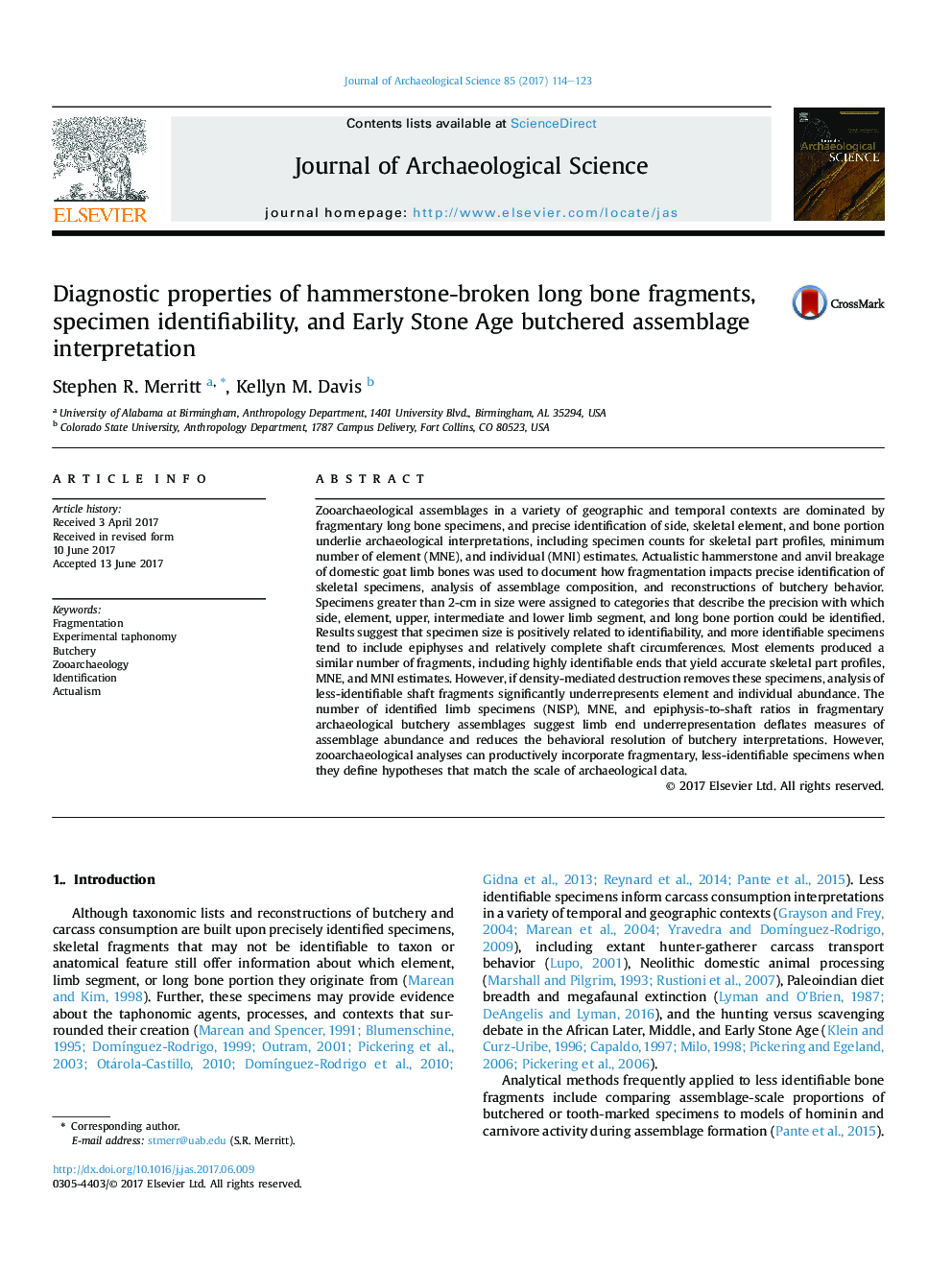| کد مقاله | کد نشریه | سال انتشار | مقاله انگلیسی | نسخه تمام متن |
|---|---|---|---|---|
| 5112015 | 1483875 | 2017 | 10 صفحه PDF | دانلود رایگان |
عنوان انگلیسی مقاله ISI
Diagnostic properties of hammerstone-broken long bone fragments, specimen identifiability, and Early Stone Age butchered assemblage interpretation
ترجمه فارسی عنوان
خواص تشخیصی از استخوان های طولانی استخوان هامستون، شناسایی نمونه، و تفسیر مونتاژ عصر قرون وسطی
دانلود مقاله + سفارش ترجمه
دانلود مقاله ISI انگلیسی
رایگان برای ایرانیان
کلمات کلیدی
موضوعات مرتبط
مهندسی و علوم پایه
مهندسی مواد
دانش مواد (عمومی)
چکیده انگلیسی
Zooarchaeological assemblages in a variety of geographic and temporal contexts are dominated by fragmentary long bone specimens, and precise identification of side, skeletal element, and bone portion underlie archaeological interpretations, including specimen counts for skeletal part profiles, minimum number of element (MNE), and individual (MNI) estimates. Actualistic hammerstone and anvil breakage of domestic goat limb bones was used to document how fragmentation impacts precise identification of skeletal specimens, analysis of assemblage composition, and reconstructions of butchery behavior. Specimens greater than 2-cm in size were assigned to categories that describe the precision with which side, element, upper, intermediate and lower limb segment, and long bone portion could be identified. Results suggest that specimen size is positively related to identifiability, and more identifiable specimens tend to include epiphyses and relatively complete shaft circumferences. Most elements produced a similar number of fragments, including highly identifiable ends that yield accurate skeletal part profiles, MNE, and MNI estimates. However, if density-mediated destruction removes these specimens, analysis of less-identifiable shaft fragments significantly underrepresents element and individual abundance. The number of identified limb specimens (NISP), MNE, and epiphysis-to-shaft ratios in fragmentary archaeological butchery assemblages suggest limb end underrepresentation deflates measures of assemblage abundance and reduces the behavioral resolution of butchery interpretations. However, zooarchaeological analyses can productively incorporate fragmentary, less-identifiable specimens when they define hypotheses that match the scale of archaeological data.
ناشر
Database: Elsevier - ScienceDirect (ساینس دایرکت)
Journal: Journal of Archaeological Science - Volume 85, September 2017, Pages 114-123
Journal: Journal of Archaeological Science - Volume 85, September 2017, Pages 114-123
نویسندگان
Stephen R. Merritt, Kellyn M. Davis,
